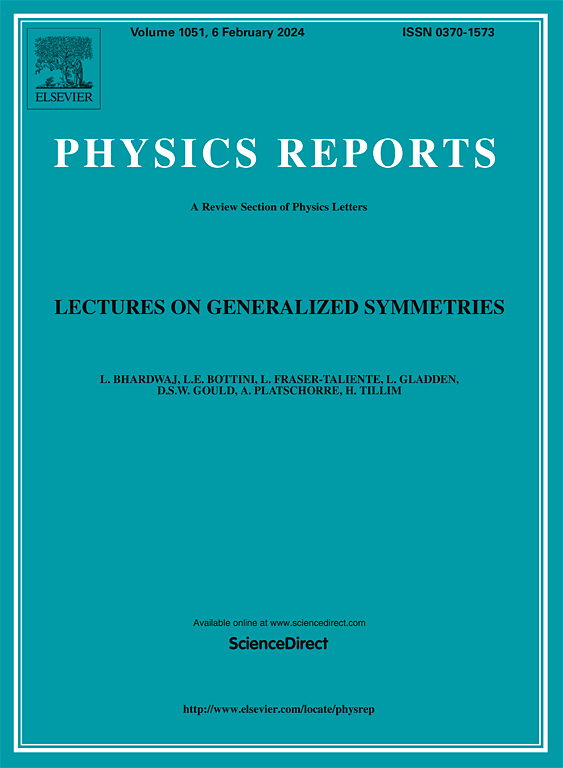Review of searches for vector-like quarks, vector-like leptons, and heavy neutral leptons in proton–proton collisions at s=13TeV at the CMS experiment
IF 29.5
1区 物理与天体物理
Q1 PHYSICS, MULTIDISCIPLINARY
引用次数: 0
Abstract
The LHC has provided an unprecedented amount of proton–proton collision data, bringing forth exciting opportunities to address fundamental open questions in particle physics. These questions can potentially be answered by performing searches for very rare processes predicted by models that attempt to extend the standard model of particle physics. The data collected by the CMS experiment in 2015–2018 at a center-of-mass energy of 13 can be used to test the standard model with high precision and potentially uncover evidence for new particles or interactions. An interesting possibility is the existence of new fermions with masses ranging from the to the scale. Such new particles appear in many possible extensions of the standard model and are well motivated theoretically. New fermions may explain the appearance of three generations of leptons and quarks, the mass hierarchy across these generations, and the nonzero neutrino masses. In this report, the results of searches targeting vector-like quarks, vector-like leptons, and heavy neutral leptons at the CMS experiment are summarized. The complementarity of current searches for each type of new fermion is discussed, and combinations of several searches for vector-like quarks are presented. The discovery potential for some of these searches at the High-Luminosity LHC is also discussed.
CMS实验在s=13TeV的质子-质子碰撞中寻找类矢量夸克、类矢量轻子和重中性轻子的综述
大型强子对撞机提供了前所未有的质子-质子碰撞数据,为解决粒子物理学中的基本开放问题带来了令人兴奋的机会。这些问题可以通过对那些试图扩展粒子物理学标准模型的模型所预测的非常罕见的过程进行搜索来得到潜在的答案。CMS实验于2015-2018年在13TeV质心能量下收集的数据可用于高精度测试标准模型,并可能发现新粒子或相互作用的证据。一种有趣的可能性是存在新的费米子,其质量范围从MeV到TeV。这些新粒子出现在标准模型的许多可能的扩展中,并且在理论上有很好的动机。新的费米子可以解释三代轻子和夸克的出现,这三代之间的质量等级,以及非零中微子的质量。本文总结了CMS实验中针对类矢量夸克、类矢量轻子和重中性轻子的搜索结果。讨论了目前对每种新费米子的搜索的互补性,并提出了几种对类矢量夸克的搜索的组合。本文还讨论了在高亮度大型强子对撞机上进行某些搜索的发现潜力。
本文章由计算机程序翻译,如有差异,请以英文原文为准。
求助全文
约1分钟内获得全文
求助全文
来源期刊

Physics Reports
物理-物理:综合
CiteScore
56.10
自引率
0.70%
发文量
102
审稿时长
9.1 weeks
期刊介绍:
Physics Reports keeps the active physicist up-to-date on developments in a wide range of topics by publishing timely reviews which are more extensive than just literature surveys but normally less than a full monograph. Each report deals with one specific subject and is generally published in a separate volume. These reviews are specialist in nature but contain enough introductory material to make the main points intelligible to a non-specialist. The reader will not only be able to distinguish important developments and trends in physics but will also find a sufficient number of references to the original literature.
 求助内容:
求助内容: 应助结果提醒方式:
应助结果提醒方式:


